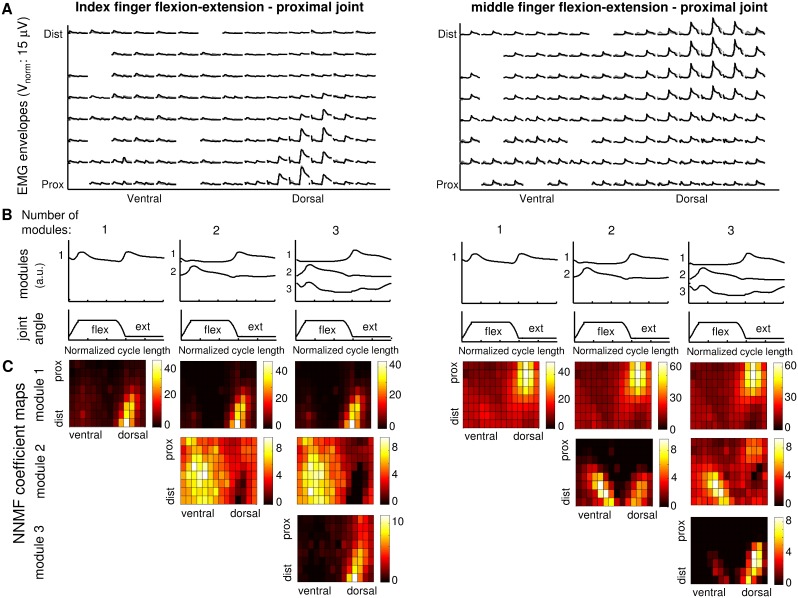Figure 4. Example of modules and weights resulting from the NMF analysis for flexion/extension of the index (on the left) and middle (on the right) fingers for one representative subject.
(A) sEMG mean envelopes estimated on all movement cycles for each channel (black line) and their approximation obtained with three NNMF modules (gray line). Two distinct areas of activity for index and middle fingers can be identified. (B) The three sets of modules identified for this subject varying the number of modules from one to three. (C) NNMF coefficient maps for the identified modules. It is possible to observe that increasing the number of modules from one to two, it is possible to separate and highlight the areas of activity during extension (map of coefficient for module 1) and flexion (map of coefficient for module 2). By increasing the number of modules from two to three, the maps corresponding to the first two modules remain mainly unchanged while module 3 highlights some detail of sEMG activity distribution.

